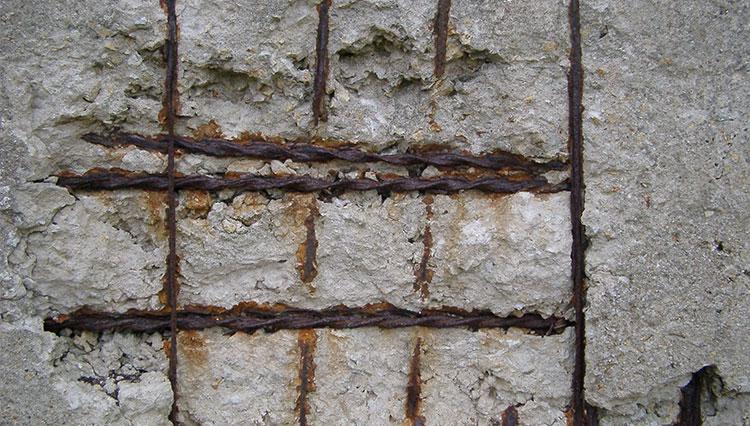
What is Concrete Degradation and how is it prevented?
Concrete degradation, also known as concrete cancer, is caused by the degradation of the steel reinforcing bars or rebar, within concrete.
This degradation is commonly caused by the exposure of the concrete to carbon dioxide in the air, this carbon dioxide affects the alkaline nature of the concrete causing it to slowly neutralise over time. This process is termed concrete carbonation, the result of the chemical reaction between external carbon dioxide and calcium hydroxide and hydrated calcium silicate within the concrete, which works to produce carbonates.
This carbonation process can happen naturally over time as the concrete is exposed to the air, or it can be accelerated by the presence of water and other factors. As the concrete carbonates, its pH level decreases, and it becomes less alkaline. This can lead to the breakdown of the concrete over time, as the alkalinity is one of the factors that helps to protect the steel within the concrete from deterioration. Concrete carbonation can also affect the strength and durability of the concrete, as the neutralisation of the alkalinity can weaken the bonds between the concrete particles.
As the concrete carbonates and the pH level decreases, the rebar within the concrete begins to lose its passive protection layer created through the alkalinity. Once this passive ferric oxide film begins to break down, the rebar will begin to rust. As the rebar rusts, it will expand and exert pressure on the surrounding concrete, causing it to crack. This process can weaken the overall structure of a building, making it unsafe over time. Loss of the steel cross-sectional area is detrimental to the performance of the structure, as this can greatly reduce the tensile strength of the steel.

One way to prevent concrete carbonation is to use concrete mixes that are designed to be more resistant to carbonation. This can be achieved by adding certain chemical admixtures to the mix, which can help to reduce the rate of carbonation. Another method to prevent concrete carbonation is to protect the concrete from exposure to carbon dioxide. This can be done by using protective coatings or membranes on the surface of the concrete. Finally, regular maintenance and monitoring of the concrete can help to identify any early signs of carbonation and allow for corrective action to be taken before the problem becomes severe.
At SDG we stock a wide range of corrosion inhibitors, anti-carbonation paints, and other surface treatments which work to extend the life of your structure.
If you have an issue with concrete degradation, and want to prolong the life of your structure, reach out to our technical team today.
Share this post